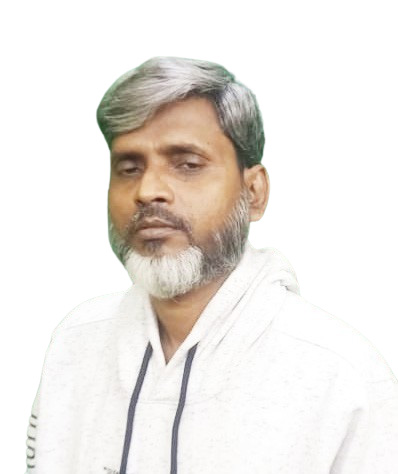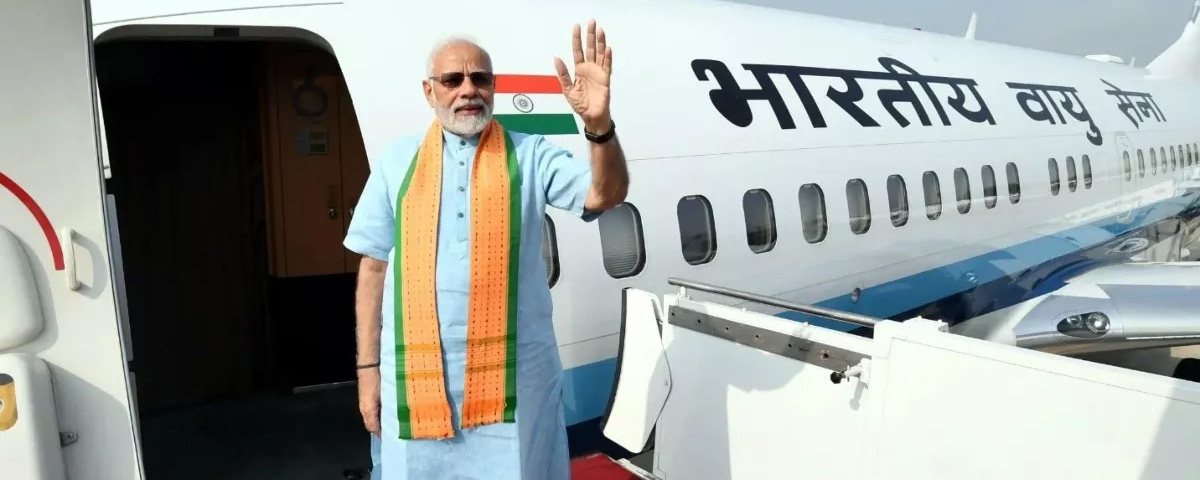The Modi Model: Distant Neighbors, Proximate Power


Prime Minister Narendra Modi promised to transform India from the top down. Yet, even at the end of his first term, his record was harshly assessed. According to The Economist, by 2019 he had failed in many of his reforms. Five more years have passed, and the Hindu nationalist Modi, now re-elected for a third term, is committed to making India the world's third-largest economy by 2030 and a developed country by 2047—the centenary of India's independence. After 11 years in power, his record reflects an economy still under construction and a democracy facing increasing fragility.
According to the International Monetary Fund, by 2022 India had surpassed the United Kingdom to become the world's fifth-largest economic power. By 2025, India had reached fourth place, and institutions like the World Bank, IMF, and S&P now estimate that India will become the third-largest economy by 2027. In fiscal year 2023–24, India's real GDP growth rate was 7.8%. This growth is primarily driven by public investment, the service sector, infrastructure, and petroleum-mining activities.
However, this rapid growth rate is not creating enough jobs for the approximately 10 million new entrants into the labor force each year. Due to an underdeveloped industrial base, India faces a severe employment crisis, especially among young people—by 2024, 42% of young graduates are unemployed.
Per capita GDP continues to highlight India's inequality. At approximately $2,730 (₹2.3 lakh) per year, this figure places India around 127th in the world rankings. Many of Modi's economic reforms—Digital India, tax reform, GST—have been inspired by the policy framework of former Prime Minister Manmohan Singh. However, Modi has implemented them in a more decisive and sometimes harsher manner, such as implementing GST in 2017, which was conceived in the 2000s and took 17 years to materialize.
Expanding Infrastructure and Digital Payments
Digitization is arguably the most prominent achievement of the Modi government. Through UPI (Unified Payments Interface), India recorded more than 100 billion transactions in 2023, totaling ₹180 lakh crore (over €2,000 billion). India has now become the world's largest digital payments market.
Similarly, infrastructure development has been the backbone of Modi's growth strategy. The construction of roads, bridges, water projects, and solar power plants has stimulated service sectors. In 2014, India had 74 operating airports, which has now increased to over 148. A network of fast and modern Vande Bharat trains has also begun to emerge, although regular trains remain crowded and slow.
But this development also comes at a cost: according to the IMF, India's public debt is now 81.9% of GDP (2024). On the other hand, megacities like New Delhi still face severe shortages of drinking water. Waste management remains chaotic, and power grids cannot meet demand.
Crony Capitalism and Economic Inequality
In today's India, crony capitalism has become linked to two names: Gautam Adani and Mukesh Ambani. One a successor to a business empire and the other a self-made billionaire, both have acquired unprecedented economic power in the Modi era. They are not alone—industrial groups such as Tata, Birla, and JSW have also become increasingly powerful.
According to a report published in 2024, India's 20 largest corporate groups now generate more than 81% of the country's corporate profits, almost double what it was in 2014.
The environment has been the biggest 'invisible casualty' of this economic ascent. A net-zero carbon target has been set for 2070, but in terms of air quality and temperature, India has already entered a 'climate risk zone.'
India's Global Image and Diplomatic Dilemmas
India has made an impressive presence on the international stage in the Modi era. The success of Chandrayaan-3, the hosting of the G20, and India's participation in the Quad and BRICS—demonstrate that India has become a 'power to be reckoned with.'
However, there are two black spots in foreign policy:
1. China's continued incursions on the Himalayan borders (Doklam, Galwan, and Tawang), with India's silence becoming a cause for criticism.
2. And the killing of a Sikh activist in Canada in June 2023, with Indian intelligence agencies suspected of involvement. The United States has also expressed concern in this matter.
Hindutva and the Erosion of Democracy
If the Modi era were to be encapsulated in a symbol, it would be: saffron color—symbol of Hindu identity and the BJP's ideological shadow. In Modi's 11 years, India's secular character has diminished, and the situation of Muslims has become akin to second-class citizenship. The Ram Temple in Ayodhya, which was grandly inaugurated in 2024, has become a clear symbol of India's religious reorganization.
Democracy, though, remains in name only. Elections do take place, but control over the media, judiciary, election commission, and opposition parties has now become commonplace.
Personality Worship and Thoughtlessness
India's national politics has now become personality-based, not ideology-based. As historian Ramachandra Guha writes in The Telegraph, 'Over the past decade, the entire party machinery—and a large part of government institutions—has been busy crafting Modi as a great, supernatural, and semi-divine man. He cannot be questioned; he can only be worshipped.'
Foreign Policy: A Strategy of Multi-Alignment
The foreign policy of the Modi era has been conducted under a strategy of 'multi-alignment,' in which India has sought to balance its traditional relationship with Russia, its strategic alliances with Western partners, and its geopolitical balancing with Asian neighbors. Some aspects of this policy have been successful, but relations with South Asian neighbors have remained consistently challenging.
Bangladesh: Strategic Cooperation, but Cracks in Trust
In the early years of the Modi government, India-Bangladesh relations improved significantly. Implementing the land boundary agreement was a historic achievement. Both countries increased partnerships in the fields of security, energy, and trade.
However, steps like the NRC and CAA have increased Dhaka's concerns. Bangladesh fears that Bengali Muslims living in India may be deprived of citizenship and pushed towards their country. The Sheikh Hasina government has publicly supported India, but social discontent has now increased.
Nepal: Tension Between Hindutva and Sovereignty
Relations with Nepal have remained tense since the 2015 India-Nepal border blockade. The Modi government's criticism of discrimination against the Madhesi community in Nepal's constitution and the blockade fueled anti-India sentiments.
In response, Nepal increased its closeness to China. Nepal included disputed areas like Kalapani and Lipulekh in its map, which India rejected. Modi's 'Ram Setu Diplomacy' (Janakpur and Ayodhya connection) has been an attempt at cultural harmony, but political distrust remains.
Bhutan: Stable but Signs of Imbalance
Bhutan has been India's closest neighbor, and in the Doklam dispute (2017), India directly intervened militarily to try to stop China. This provided immediate security to Bhutan, but India's military presence and interference in decisions have increased unease among some sections there.
Bhutan has now started communicating with China, and if it establishes diplomatic relations, it would be a strategic blow for India.
Maldives: Changing Relations
Relations with the Maldives deteriorated in Modi's first term due to the pro-China government of Abdulla Yameen in the Maldives. But India-Maldives relations improved again after Ibrahim Solih came to power in 2018. India started numerous development projects.
However, relations have again become strained with the rise of Yameen supporter Mohammed Muizzu to power in 2023 and the promotion of the 'India Out' campaign. India had to remove its military presence, which was considered a diplomatic defeat, but then the diplomacy of the Modi government worked here, relations started as before and at the end of July when Narendra Modi went on a visit to Maldives, he was also awarded the summit honor there.
Sri Lanka: India as Savior in Economic Crisis
In the 2022 Sri Lankan economic crisis, India provided assistance of more than $4 billion—in fuel, food, and medicines. But Chinese debt traps and projects like the Hambantota Port keep Sri Lanka under China's influence.
However, under the leadership of Ranil Wickremesinghe, India has found strategic cooperation, but in the long term, Sri Lanka's economic and diplomatic stability remains uncertain for India.
Afghanistan: The Taliban Era and India's Dilemma
The US withdrawal and the Taliban's return to power (2021) put India in a diplomatic crisis. India initially did not recognize the Taliban, but later established contacts under the guise of humanitarian assistance.
India's Afghan policy remains unclear. India's coordination with partners like Iran and Russia is limited, and China is now more active in Afghan geopolitics than India.
Pakistan: Confrontation and 'Operation Sindoor'
Relations between India and Pakistan have remained continuously tense after the Uri attack in 2016 and the Pulwama attack in 2019. Actions such as the Balakot Air Strike, the abrogation of Article 370, and cross-border surgical strikes have permanently complicated relations.
After 'Operation Sindoor' in response to the Pahalgam terrorist attack this year, diplomatic dialogue with Pakistan is almost suspended, and trade, visas, cultural exchanges—all are stalled.
Conclusion: Successes and Limitations
The Modi government's foreign policy has tried to establish India as an emerging power on the global stage—the active role on platforms such as QUAD, G20, I2U2, and ISA is evidence of this. Jaishankar's aggressive and outspoken strategy has been praised in some quarters.
But in the context of neighboring countries, India's policy has been mostly reactive, not strategic. While India's soft power and development assistance have brought some benefits, excessive militarization, incompetent dialogue, and nationalism-based diplomacy have eroded trust.
Modi's foreign policy is being seen as 'event-driven diplomacy'—platforms, grandeur, camera-ready foreign tours—but the long-term strategy, especially with neighbors, is still incomplete.